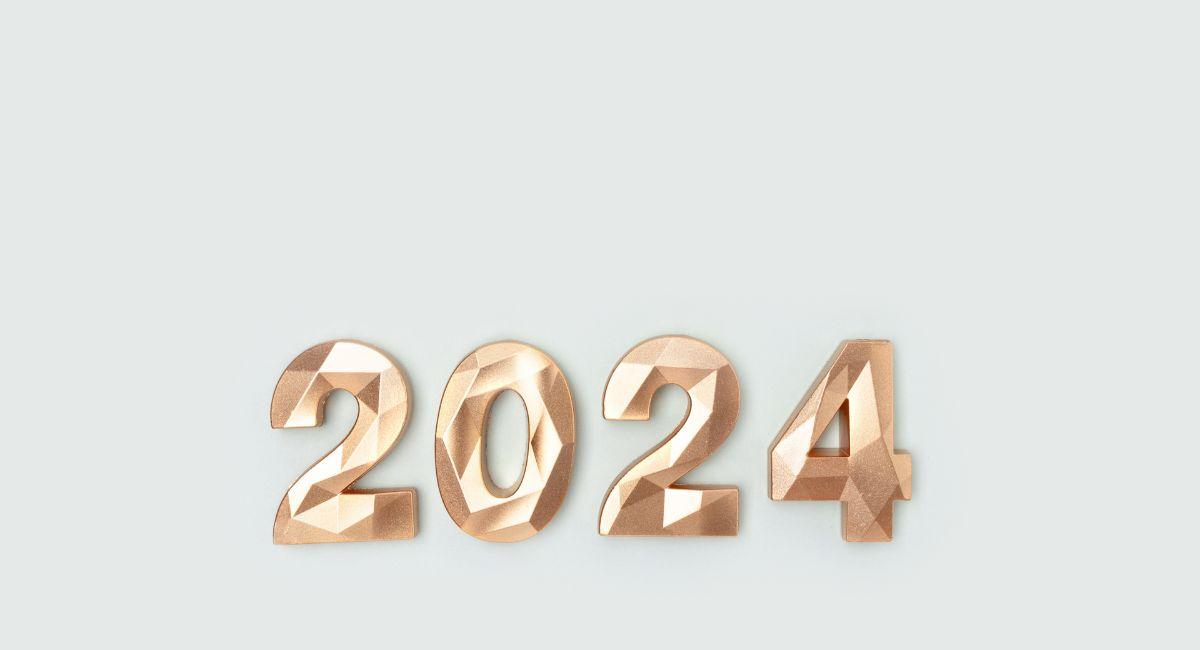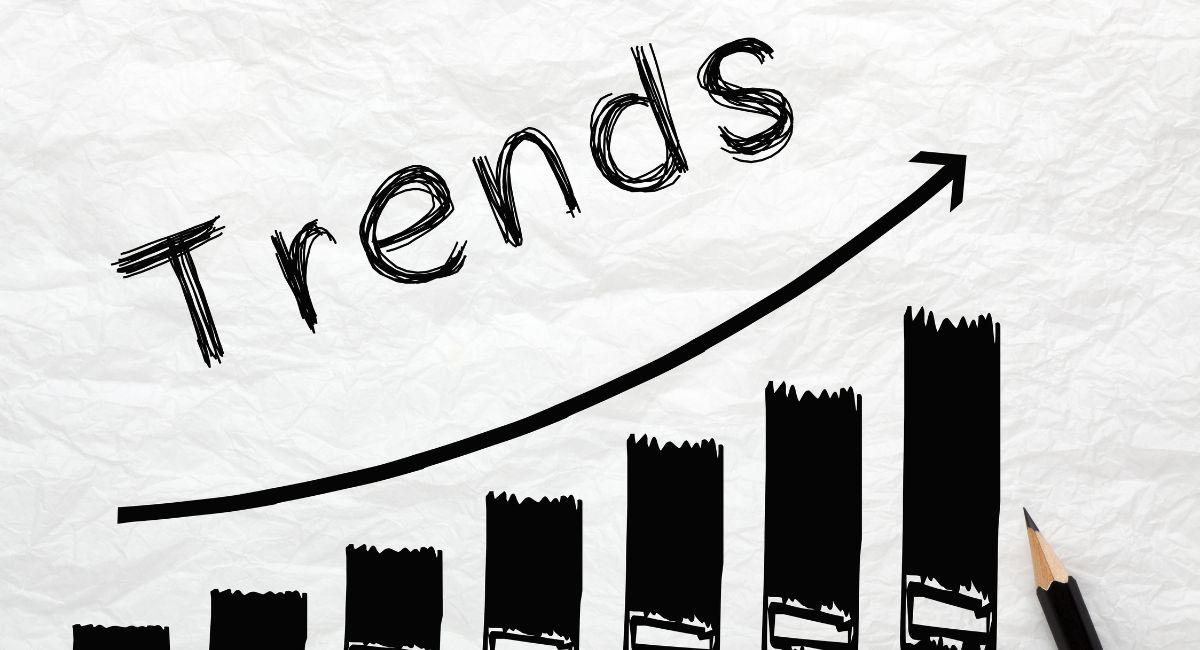Explore The Future With Top Blockchain Trends To Follow In 2024
The year 2024 promises to be a pivotal chapter in the ongoing evolution of blockchain trends. As this transformative force continues to redefine industries and reshape traditional paradigms, staying abreast of the latest trends is paramount. In this comprehensive exploration, we delve into the top blockchain trends poised to dominate the landscape in 2024.
Top 6 Blockchain trends:
1. Decentralized Finance (DeFi) 2.0:
Evolution Beyond Decentralized Finance 1.0:
Decentralized Finance (DeFi) has been a trailblazer, disrupting traditional financial systems by providing decentralized alternatives to banking services. In 2024, the industry is set to witness DeFi 2.0, characterized by enhanced interoperability, improved scalability, and a broader array of financial instruments. Projects focusing on cross-chain compatibility and scalability solutions are expected to take center stage, enabling seamless communication between different blockchains and addressing the scalability challenges that have limited DeFi’s mass adoption.
Integration of Traditional Finance:
DeFi 2.0 is likely to see increased integration with traditional finance systems, fostering collaboration rather than competition. Hybrid platforms that bridge the gap between decentralized and centralized finance could emerge, allowing for a smoother transition for users unfamiliar with blockchain technology.
2. NFT Ecosystem Expansion:
Beyond Digital Art:
Non-Fungible Tokens (NFTs) gained mainstream attention primarily in the realm of digital art. In 2024, the NFT ecosystem is poised to expand beyond art into areas such as virtual real estate, gaming assets, and intellectual property. NFTs could redefine ownership and value representation across various industries, creating new possibilities for content creators, gamers, and businesses to tokenize and monetize their assets.
Interoperability and Standardization:
Interoperability standards for NFTs may become more prevalent, allowing tokens to move seamlessly across different platforms and ecosystems. This could lead to a more interconnected and dynamic NFT market, fostering collaboration and innovation.
3. Web3 and Decentralized Internet:
Shaping the Future of the Internet:
The concept of Web3, representing a decentralized and user-centric internet, is gaining traction. In 2024, blockchain technologies are expected to play a pivotal role in shaping the infrastructure of the next-generation internet. Decentralized storage, identity solutions, and blockchain-based protocols could empower users with greater control over their data and online interactions, reducing reliance on centralized entities.
Privacy and Security:
Privacy-focused blockchain projects are likely to gain prominence within the Web3 ecosystem. Enhanced privacy features and decentralized identity solutions could address growing concerns about data breaches and surveillance, paving the way for a more secure and private internet experience.
4. Central Bank Digital Currencies (CBDCs):
Mainstream Adoption of CBDCs:
Central Bank Digital Currencies (CBDCs) are gaining momentum as governments explore the digitization of national currencies. In 2024, several countries may move towards the implementation and mainstream adoption of CBDCs. These digital currencies, built on blockchain technology, could redefine the traditional banking system, offering benefits such as increased efficiency, financial inclusion, and programmable money.
Interoperability Challenges:
The integration of CBDCs into the global financial landscape presents challenges related to interoperability and regulatory frameworks. Efforts to establish standards for CBDCs and facilitate cross-border transactions are likely to be at the forefront of discussions in 2024.
5. Sustainable Blockchain Solutions:
Addressing Environmental Concerns:
The environmental impact of blockchain trends, particularly Proof-of-Work (PoW) consensus mechanisms, has been a subject of scrutiny. In 2024, sustainability is expected to take center stage, with a focus on developing and adopting eco-friendly consensus algorithms. Projects exploring Proof-of-Stake (PoS), delegated PoS, and other energy-efficient alternatives could gain traction, aligning blockchain technology with global sustainability goals.
Carbon Offsetting Initiatives:
Blockchain trends projects may actively participate in carbon offsetting initiatives, contributing to a more sustainable and responsible blockchain ecosystem. Transparent reporting of energy consumption and carbon footprint could become standard practices within the industry.
6. Cross-Industry Blockchain Integration:
Supply Chain and Logistics:
Blockchain’s application in supply chain and logistics is set to witness accelerated growth in 2024. From traceability of goods to reducing inefficiencies in global supply chains, blockchain’s decentralized and transparent nature makes it an ideal solution for enhancing the integrity of supply chain processes.
Healthcare and Identity Management:
Blockchain’s potential in healthcare for secure and interoperable data management is expected to advance. The industry may witness the integration of blockchain for identity management, ensuring the secure and verifiable sharing of healthcare data.
Web3 Community: @TheGmMachine
Token: $GM
Blockchain: $SOLThe GM Machine is a Chrome extension that aims to make it easy for people to greet each other with a “GM” on Twitter (a short way of saying “Good Morning”). It is a way to connect… pic.twitter.com/suuhxXyGTQ
— Printhereum (@Printhereum) January 5, 2024
What is the demand for blockchain in 2024?

As we step into the year 2024, the demand for blockchain technology reaches unprecedented heights, driving innovation, reshaping industries, and permeating diverse sectors of the global economy. This comprehensive analysis delves into the multifaceted factors that contribute to the soaring demand for blockchain in 2024.
1. Decentralized Finance (DeFi) Revolution:
Maturation and Expansion:
The demand for blockchain in 2024 is significantly fueled by the maturation and expansion of the Decentralized Finance (DeFi) ecosystem. DeFi, which gained traction in previous years, has evolved beyond its nascent stages. The growing demand for decentralized alternatives to traditional financial services is reshaping the financial landscape. Smart contracts, lending platforms, decentralized exchanges, and yield farming protocols are experiencing unprecedented adoption, fueled by the desire for financial inclusivity, transparency, and efficiency.
Cross-Chain Solutions:
To meet the diverse needs of DeFi users, blockchain trends platforms are actively developing and adopting cross-chain solutions. Interoperability becomes paramount as users seek seamless transactions and interactions across multiple blockchains. The demand for interoperable blockchain networks that facilitate fluid asset movements and interactions between different decentralized applications (DApps) is a driving force in 2024.
2. NFTs and the Digital Asset Renaissance:
Beyond Digital Art:
The Non-Fungible Token (NFT) phenomenon, which gained widespread attention in previous years, continues to surge in demand in 2024. NFTs are expanding beyond the realm of digital art, finding applications in virtual real estate, gaming assets, intellectual property, and beyond. The demand for blockchain technology in this context is fueled by the desire for verified ownership, provenance tracking, and the tokenization of a wide array of assets in both the digital and physical realms.
Enhanced Token Standards:
Blockchain platforms are responding to the demand for NFTs by enhancing token standards, making them more versatile and applicable to various industries. The development of standards that allow NFTs to represent not only ownership but also real-world assets such as real estate, patents, and even fractional ownership of physical assets is a pivotal trend in 2024.
3. Web3 and the Decentralized Internet:
Empowering User-Centric Experiences:
The demand for blockchain trends in 2024 extends to the concept of Web3, representing a paradigm shift towards a decentralized and user-centric internet. Blockchain’s role in Web3 is to empower users with greater control over their data, online interactions, and digital identity. The demand for decentralized storage, identity solutions, and blockchain-based protocols is driven by the desire for enhanced privacy, security, and autonomy in the digital realm.
Privacy-Focused Solutions:
Blockchain projects responding to the demand for Web3 are placing a significant emphasis on privacy-focused solutions. Technologies that allow users to have granular control over their personal data, secure identity management, and the ability to transact privately are at the forefront of blockchain development in 2024.
4. Central Bank Digital Currencies (CBDCs):
Global Digitization of Currency:
The demand for blockchain technology extends into the realm of central banking with the exploration and implementation of Central Bank Digital Currencies (CBDCs). Governments and central banks worldwide are recognizing the potential benefits of digitizing national currencies using blockchain technology. The demand for blockchain in this context is driven by the pursuit of increased efficiency, financial inclusion, and programmable money.
Regulatory Frameworks and Standards:
The demand for blockchain trends in the realm of CBDCs is accompanied by a need for clear regulatory frameworks and standards. As countries consider the adoption of CBDCs, the development of interoperable systems, cross-border frameworks, and regulatory guidelines becomes imperative. Blockchain solutions that can seamlessly integrate with existing financial infrastructures while adhering to regulatory requirements are in high demand.
5. Sustainability in Blockchain:
Addressing Environmental Concerns:
An increasingly prevalent factor influencing the demand for blockchain in 2024 is sustainability. The environmental impact of blockchain trends, particularly energy-intensive Proof-of-Work (PoW) consensus mechanisms, has led to a heightened awareness of the industry’s carbon footprint. The demand for sustainable blockchain solutions is driven by a collective commitment to address environmental concerns.
Adoption of Energy-Efficient Consensus Mechanisms:
Blockchain projects and platforms are actively responding to the demand for sustainability by adopting energy-efficient consensus mechanisms. Proof-of-Stake (PoS), delegated PoS, and other environmentally friendly alternatives are gaining traction. The demand for blockchain platforms that prioritize environmental sustainability aligns with broader global initiatives toward eco-friendly technologies.
6. Cross-Industry Blockchain Integration:
Supply Chain Transparency:
The demand for blockchain technology is soaring in industries seeking enhanced transparency, traceability, and efficiency in supply chain management. Blockchain’s trends immutable ledger and decentralized nature make it an ideal solution for tracking and verifying the provenance of goods throughout the supply chain. The demand for blockchain in supply chain applications is driven by the need for reduced inefficiencies, enhanced security, and improved trust among stakeholders.
Healthcare Data Management:
Blockchain’s trends potential in healthcare for secure and interoperable data management is a significant driver of demand. Blockchain solutions that enable secure and verifiable sharing of healthcare data while maintaining patient privacy are at the forefront. The demand for blockchain in healthcare extends beyond data management to encompass identity verification, drug traceability, and clinical trial transparency.
The demand for blockchain technology in 2024 is characterized by a confluence of factors that span across finance, digital assets, the internet, central banking, sustainability, and diverse industries. The continued maturation of DeFi, the expansion of NFT ecosystems, the evolution towards a user-centric internet, the digitization of national currencies, the focus on sustainability, and cross-industry blockchain integration are defining the landscape.
As businesses, governments, and individuals recognize the transformative potential of blockchain technology, the demand for innovative solutions continues to surge. Navigating this blockchain-driven future requires a strategic understanding of these trends, a commitment to sustainability, and an agile approach to technological advancements. The year 2024 emerges as a pivotal juncture in the blockchain narrative, where the demands of a rapidly evolving world are met with the resilience, adaptability, and promise of blockchain technology.
Where will blockchain technology be in 5 years?

As we embark on a journey into the future, envisioning the trajectory of blockchain technology five years from now requires a keen understanding of the ongoing trends, technological advancements, and the dynamic landscape of the digital era. This in-depth analysis explores the potential realms where blockchain trends might find itself in 2029.
1. Mainstream Adoption Across Industries:
Evolution Beyond Early Adopters:
In five years, blockchain technology is poised to transition from its current phase of early adoption to mainstream acceptance across a multitude of industries. Sectors beyond finance, which has been a pioneer in embracing blockchain, will witness widespread integration. Industries such as healthcare, supply chain, logistics, and even traditional institutions like education and government are likely to leverage blockchain trends for enhanced transparency, security, and efficiency.
Cross-Industry Interoperability:
Interoperability will be a key theme, with different blockchains seamlessly interacting to create a more connected and efficient ecosystem. This cross-industry integration will give rise to novel use cases and collaborative solutions, leading to a more interconnected global economy powered by blockchain technology.
2. Decentralized Finance (DeFi) as a Financial Norm:
DeFi as Standard Financial Infrastructure:
The next five years are expected to solidify the position of Decentralized Finance (DeFi) as a standard and integral component of the global financial infrastructure. The maturation of DeFi protocols, improved security measures, and increased regulatory clarity will contribute to its mainstream adoption. Traditional financial institutions may collaborate with or incorporate DeFi elements into their operations to capitalize on the efficiency and inclusivity it offers.
Enhanced Financial Instruments:
In the future, DeFi is likely to evolve beyond its current suite of services. Enhanced financial instruments, such as decentralized derivatives, more sophisticated lending platforms, and decentralized insurance protocols, will emerge. These advancements will not only cater to the demands of sophisticated users but also attract a broader audience seeking innovative financial solutions.
3. Tokenization of Real-World Assets:
Digital Representations of Physical Assets:
The concept of tokenization will extend beyond digital assets to encompass a wide array of real-world assets. In 2027, we can anticipate the tokenization of real estate, art, commodities, and even entire businesses. This tokenization trend will unlock liquidity in traditionally illiquid markets, allowing fractional ownership and democratizing access to valuable assets.
Enhanced Token Standards:
Token standards will evolve to accommodate the complexities of real-world assets. Standards that facilitate regulatory compliance, interoperability, and smart contract functionalities tailored to specific asset classes will become prevalent. These enhanced standards will provide a solid foundation for the tokenization of diverse assets.
4. Blockchain-Powered Internet (Web3):
Web3 Revolution:
The next five years will witness the ascent of Web3, a decentralized and user-centric version of the internet. Blockchain technology will play a pivotal role in reshaping the architecture of the web. Users will have greater control over their data, privacy will be prioritized, and decentralized applications (DApps) will redefine how individuals interact with digital services.
Decentralized Identity Solutions:
Blockchain-based decentralized identity solutions will become integral to Web3. Users will have self-sovereign control over their digital identities, reducing reliance on centralized entities. This shift will lead to enhanced privacy, reduced data breaches, and a more secure online experience.
5. Global Integration of Central Bank Digital Currencies (CBDCs):
Digitization of National Currencies:
Central Bank Digital Currencies (CBDCs) will become increasingly prevalent on the global stage. Various countries will digitize their national currencies, leveraging blockchain technology for issuance and transactions. The interoperability of CBDCs will facilitate cross-border transactions, potentially streamlining international trade and financial transactions.
Integration with Traditional Banking Systems:
CBDCs will integrate with traditional banking systems, providing a bridge between the legacy financial infrastructure and the new digital economy. Users will experience the benefits of digital currencies without compromising on the familiarity and convenience offered by traditional banking services.
The landscape of blockchain technology in 2027 is poised to be transformative, marked by mainstream adoption, innovative financial solutions, the tokenization of real-world assets, a decentralized internet revolution, global integration of CBDCs, and a steadfast commitment to sustainability.
As blockchain technology matures, its impact will extend far beyond the realm of cryptocurrencies. It will become an integral part of the global infrastructure, influencing how industries operate, individuals interact with the digital world, and economies function. Navigating this transformed landscape requires a forward-thinking approach, adaptability to technological advancements, and a commitment to the core principles of decentralization, transparency, and inclusivity that define the essence of blockchain technology. The next five years promise to be a period of unprecedented innovation, collaboration, and evolution, shaping the future of blockchain technology on a global scale.
Also, read- Top 10 Big Technology Developers Embracing Blockchain Technology
Conclusion: Navigating the Blockchain Renaissance
As we venture further into 2024, the blockchain trends landscape unveils a Renaissance of innovation, collaboration, and transformative potential. Decentralized Finance 2.0, the expanding NFT ecosystem, the evolution of Web3, the rise of CBDCs, sustainable blockchain solutions, and cross-industry integration are the pillars shaping this dynamic era.
These trends represent not only the technological advancements within the blockchain space but also a paradigm shift in how we perceive and interact with digital assets, finance, and the internet. Navigating the blockchain trends Renaissance requires a keen understanding of these trends and a commitment to embracing the opportunities and challenges they present. The coming years are poised to redefine industries, empower individuals, and propel blockchain technology into unprecedented heights, marking a chapter in its evolution that promises to leave an indelible mark on the global landscape.
Stay informed with daily updates from Blockchain Magazine on Google News. Click here to follow us and mark as favorite: [Blockchain Magazine on Google News].
Get Blockchain Insights In Inbox
Stay ahead of the curve with expert analysis and market updates.
latest from tech
Disclaimer: Any post shared by a third-party agency are sponsored and Blockchain Magazine has no views on any such posts. The views and opinions expressed in this post are those of the clients and do not necessarily reflect the official policy or position of Blockchain Magazine. The information provided in this post is for informational purposes only and should not be considered as financial, investment, or professional advice. Blockchain Magazine does not endorse or promote any specific products, services, or companies mentioned in this posts. Readers are encouraged to conduct their own research and consult with a qualified professional before making any financial decisions. The featured image used is just a creative depiction of the title and it does not intend to hurt sentiments of any person or institution. If it hurts anyone sentiments, please do not hesitate to reach out to Blockchain Magazine.

 Bitcoin
Bitcoin  Ethereum
Ethereum  XRP
XRP  Tether
Tether  Solana
Solana  USDC
USDC  Dogecoin
Dogecoin  Cardano
Cardano  Lido Staked Ether
Lido Staked Ether  TRON
TRON  Wrapped Bitcoin
Wrapped Bitcoin  Wrapped stETH
Wrapped stETH  Chainlink
Chainlink  Avalanche
Avalanche  Sui
Sui  Stellar
Stellar  Litecoin
Litecoin  Toncoin
Toncoin  Shiba Inu
Shiba Inu  Hedera
Hedera  LEO Token
LEO Token  USDS
USDS  Hyperliquid
Hyperliquid  Polkadot
Polkadot  WETH
WETH  MANTRA
MANTRA  Bitcoin Cash
Bitcoin Cash  Bitget Token
Bitget Token  Ethena USDe
Ethena USDe  Wrapped eETH
Wrapped eETH  Uniswap
Uniswap  Monero
Monero  NEAR Protocol
NEAR Protocol  Pepe
Pepe  WhiteBIT Coin
WhiteBIT Coin  Ondo
Ondo  Aave
Aave  Bittensor
Bittensor  Aptos
Aptos  Internet Computer
Internet Computer  Dai
Dai  Official Trump
Official Trump  Mantle
Mantle  Ethereum Classic
Ethereum Classic  OKB
OKB  Tokenize Xchange
Tokenize Xchange  Gate
Gate  sUSDS
sUSDS  Sonic (prev. FTM)
Sonic (prev. FTM) 




